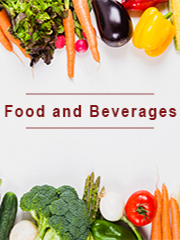Report overview
Canning is a method used to preserve foods for long periods of time by packing them in airtight containers. This allows food to be shelf-stable and safe to eat for 1 to 5 years or longer. Canning was first developed in the late 18th century as a way to provide a stable food source for soldiers and sailors at war. Common canned foods include fruits, vegetables, beans, soups, meats and seafood.
In this report, we mainly count Canned Cooking Sauces, Canned Desserts, Canned Fish/Seafood, Canned Fruits, Canned Meat, Canned Pasta & Noodles, Canned Soups and Canned Vegetables.
This report aims to provide a comprehensive presentation of the global market for Canned Food, with both quantitative and qualitative analysis, to help readers develop business/growth strategies, assess the market competitive situation, analyze their position in the current marketplace, and make informed business decisions regarding Canned Food. This report contains market size and forecasts of Canned Food in global, including the following market information:
Global Canned Food Market Revenue, 2018-2023, 2024-2029, ($ millions)
Global Canned Food Market Sales, 2018-2023, 2024-2029, (K MT)
Global top five Canned Food companies in 2022 (%)
The global Canned Food market was valued at US$ 24950 million in 2022 and is projected to reach US$ 32250 million by 2029, at a CAGR of 3.7% during the forecast period. The influence of COVID-19 and the Russia-Ukraine War were considered while estimating market sizes.
Global Canned Food key players include Conagra Brands, Campbell Soup, Kraft Heinz, etc. Global top three manufacturers hold a share over 30%.
Europe is the largest market, with a share about 30%, followed by North America and China, both have a share over 40 percent.
In terms of product, Canned Vegetables is the largest segment, with a share about 20%. And in terms of application, the largest application is Supermarkets/Hypermarkets, followed by Independent Retailers.
We surveyed the Canned Food manufacturers, suppliers, distributors and industry experts on this industry, involving the sales, revenue, demand, price change, product type, recent development and plan, industry trends, drivers, challenges, obstacles, and potential risks.
Total Market by Segment:
Global Canned Food Market, by Type, 2018-2023, 2024-2029 ($ Millions) & (K MT)
Global Canned Food Market Segment Percentages, by Type, 2022 (%)
Canned Cooking Sauces
Canned Desserts
Canned Fish/Seafood
Canned Fruits
Canned Meat
Canned Pasta & Noodles
Canned Soups
Canned Vegetables
Global Canned Food Market, by Application, 2018-2023, 2024-2029 ($ Millions) & (K MT)
Global Canned Food Market Segment Percentages, by Application, 2022 (%)
Supermarkets/Hypermarkets
Independent Retailers
Convenience Stores
Online Sales
Others
Global Canned Food Market, By Region and Country, 2018-2023, 2024-2029 ($ Millions) & (K MT)
Global Canned Food Market Segment Percentages, By Region and Country, 2022 (%)
North America
US
Canada
Mexico
Europe
Germany
France
U.K.
Italy
Russia
Nordic Countries
Benelux
Rest of Europe
Asia
China
Japan
South Korea
Southeast Asia
India
Rest of Asia
South America
Brazil
Argentina
Rest of South America
Middle East & Africa
Turkey
Israel
Saudi Arabia
UAE
Rest of Middle East & Africa
Competitor Analysis
The report also provides analysis of leading market participants including:
Key companies Canned Food revenues in global market, 2018-2023 (Estimated), ($ millions)
Key companies Canned Food revenues share in global market, 2022 (%)
Key companies Canned Food sales in global market, 2018-2023 (Estimated), (K MT)
Key companies Canned Food sales share in global market, 2022 (%)
Further, the report presents profiles of competitors in the market, key players include:
Conagra Brands
Del Monte Foods
Hormel Foods
Dole Food
B&G Food
Campbell Soup
Ayam Brand
General Mills
Grupo Calvo
Kraft Heinz
Danish Crown
JBS
Nestle
Dongwon Industries
Rhodes Food Group
Bolton Group
AhiGuven
Bonduelle
Goya Foods
Bumble Bee
Outline of Major Chapters:
Chapter 1: Introduces the definition of Canned Food, market overview.
Chapter 2: Global Canned Food market size in revenue and volume.
Chapter 3: Detailed analysis of Canned Food manufacturers competitive landscape, price, sales and revenue market share, latest development plan, merger, and acquisition information, etc.
Chapter 4: Provides the analysis of various market segments by type, covering the market size and development potential of each market segment, to help readers find the blue ocean market in different market segments.
Chapter 5: Provides the analysis of various market segments by application, covering the market size and development potential of each market segment, to help readers find the blue ocean market in different downstream markets.
Chapter 6: Sales of Canned Food in regional level and country level. It provides a quantitative analysis of the market size and development potential of each region and its main countries and introduces the market development, future development prospects, market space of each country in the world.
Chapter 7: Provides profiles of key players, introducing the basic situation of the main companies in the market in detail, including product sales, revenue, price, gross margin, product introduction, recent development, etc.
Chapter 8: Global Canned Food capacity by region & country.
Chapter 9: Introduces the market dynamics, latest developments of the market, the driving factors and restrictive factors of the market, the challenges and risks faced by manufacturers in the industry, and the analysis of relevant policies in the industry.
Chapter 10: Analysis of industrial chain, including the upstream and downstream of the industry.
Chapter 11: The main points and conclusions of the report.
